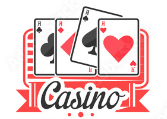
Sports betting is an activity in which bettors invest their money on an outcome they believe is likely and are paid if it occurs. Although sports betting can be profitable, success requires knowledge, strategy and discipline on all parts.
Odds listed for sporting events reflect both their probability of happening and risk involved with wagering a bet, with higher probabilities representing reduced risk and smaller payoffs; lower probabilities indicating greater risks with larger returns.
Betting lines
If you’re new to place sporting bet, it is crucial that you understand how betting lines operate. Betting lines provide an estimate of expected payouts and help determine if placing the bet is worthwhile. American odds typically use positive values to indicate potential returns from $100 bets while negative values represent risk and the amount you may need to risk in order to turn a profit.
Sportsbooks create sports betting lines, which refer to either the point spread or total points for a game. As bettors wager and more information becomes known, the lines evolve constantly – this is why sharp bettors often “shop” various sportsbooks for optimal lines; moneyline bets tend to be the easiest for newcomers.
Parlay bets
Parlay bets are an increasingly popular way to increase your winnings when sports betting. By combining multiple bets into one larger bet and rolling each bet’s winnings into its leg of the bet, parlay bets provide an effective strategy for increasing returns while simultaneously spreading risks – however it is essential that careful thought be given before placing one.
Same game parlays combine bets on different aspects of one game, such as point spreads, over/under totals and player props. Each individual bet is known as a “leg”, with the parlay winning only when all legs hit successfully. A same game parlay can significantly increase potential payouts but is not guaranteed; payouts and profits may differ depending on methodology used to convert odds or calculate parlays.
Over/Under bets
Over/Under bets (also referred to as total bets) are a type of wager which attempts to predict the total number of points, goals or runs scored during a sports game. A sportsbook establishes the Over/Under line and bettors place wagers predicting whether the final score will exceed or fall short of an agreed upon target number.
These bets are extremely popular with fans who care more about how many points will be scored than which team wins, such as basketball or football fans. You’ll often see it found across major sports and particularly those featuring higher scoring games such as those mentioned above; betting lines vary according to sport and amount betted will alter odds accordingly; in certain instances the latter could even be adjusted in order to encourage more bets on the under side.
Moneyline bets
Moneyline bets are among the simplest forms of sports wagering, offering more odds options than standard point spreads. Odds on teams expected to win easily will usually be higher than underdogs – creating potential value opportunities. Moneyline odds may appear in different formats including American odds or fractional odds.
Betting on a moneyline may seem straightforward, but it does involve risk. It’s essential that you understand both teams and athletes that you are betting on as well as their history against each other as its odds reflect each team’s probability of winning the game – unlike point spread bets where point spread bets correlate directly to probability of victory; additionally some sports such as soccer and former hockey involve ties that complicate odds further; this could still prove profitable when betting three-way moneylines!
Future bets
Futures bets are wagers placed over an extended period, typically before a season begins and taking into account multiple games played over its duration. The longer a season lasts, the more money one could potentially make off futures bets.
Futures bet odds differ from regular betting lines in that they often feature either a plus or minus sign to indicate favoritism, with negative numbers representing favorites and positive numbers representing underdogs – with favorites having higher chances of victory but lower payout rates than underdogs.
Futures bets differ from prop bets by being posted onsite before the start of a season and can be easily compared between sportsbooks to assess odds and calculate payouts of a potential winning wager.
